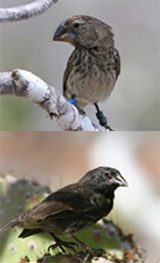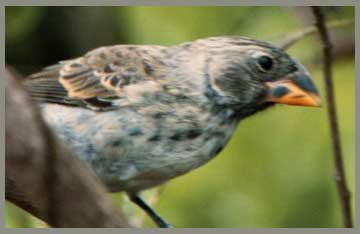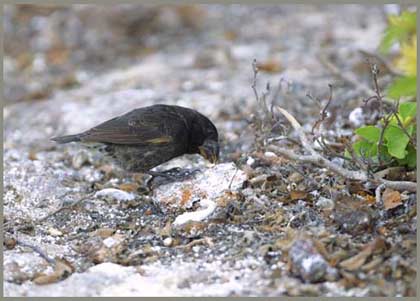The competition between two species of finches in the Galapagos Islands has led to a decrease in the beak size of one species, making it easier for them to find food. This change has been observed by scientists.
 |
The Large Ground Finch (top) has competed with the Medium Ground Finch for large seeds, causing the latter to evolve smaller beaks (bottom). (Photo: Nature) |
In a recent article published in Science, Peter Grant and Rosemary Grant, both biologists at Princeton University in New Jersey, USA, described the competition between the Medium Ground Finch (Geospiza fortis) and the Large Ground Finch (Geospiza magnirostris).
The Medium Ground Finch (G. fortis) was forced to evolve a smaller beak as it faced competition from the Large Ground Finch (Geospiza magnirostris), which arrived on the island over 20 years ago, alongside recent severe drought conditions.
“This happened very quickly,” Peter Grant noted. In fact, the change occurred within a single generation of birds, Grant added.
The evolutionary push began when a few Large Ground Finches settled on the island during an unusually wet El Niño event in 1982.
Since then, the Large Ground Finch (G. magnirostris) has consumed most of the large, spiny seeds from the island’s vines, gradually forcing the Medium Ground Finch to rely on smaller seeds from other plants.
As a result, G. fortis with smaller beaks could not compete with the larger species and often struggled to raise their young. This situation compelled some finches to adapt by reducing the size of their foraging tools.
However, the real problem arose during the severe drought of 2004-2005, when all types of seeds were scarce on the island.
“Most of the birds with large beaks prior to the drought disappeared,” Grant remarked. This included the majority of newly arrived G. magnirostris individuals and those G. fortis birds that still possessed larger beaks.
“This is a classic example of rapid evolution,” commented David Skelly, an ecologist and evolutionary biologist at Yale University regarding this situation.
Evolution is typically viewed as a slow process in larger animals such as fish, birds, reptiles, and mammals. Changes in beak size occurring over a few decades seem to be quite rapid. Thus, the finches in the Galapagos are considered a remarkable case of rapid evolution driven by harsh environmental conditions.
“It now seems that Grant’s work has highlighted a trend that could be quite common,” Skelly stated.

Medium Ground Finch – Geospiza fortis (Photo: oursci.org)

Large Ground Finch – Geospiza magnirostris (Photo: cahlander)
T. An




















































